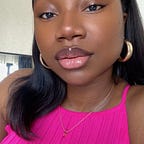World Humanitarian Day Lauds Women: Now What?
We call upon the IASC Principals in Geneva to go beyond awareness to action — three years on.
This 19 August, World Humanitarian Day (WHD) was dedicated to commemorating the contributions of women working in the aid industry. Comprising 43 percent of the aid employees, ( Devex survey), women aid workers are the first to respond to crises and among the last to leave: from responding to the Ebola outbreak in Congo to supporting Rohingyan refugees, humanitarian women are at the frontlines saving lives and easing human suffering.
69% of women aid workers are sexually harassed by their male colleagues
However, despite their contributions — and in high-risk environments at that — they face some of their most serious and imminent threats to their safety and career progress at the hands of their male colleagues. WHD is not only a day to reflect on our contributions to the sector, but similarly, to take stock of how the Inter-Agency Standing Committee — the Geneva-based standard-setting body in charge of humanitarian operations — is doing in meeting their commitments to ensure a workplace for female aid workers free from discrimination, harassment, and abuse.
In 2015, five female aid workers started the Humanitarian Women’s Network (HWN) from their living room in Guinea. HWN has since grown into a 7,000-woman global network whose objective is to achieve and provide professional development, peer support, and global advocacy to realize institutional and cultural change for women humanitarians. In 2016, HWN conducted an oft-cited survey and found that 69 percent of women in aid had experienced sexual harassment in the workplace from their male colleagues and seldom report it for fear of losing their jobs or being demoted — and that 25 percent of women drop-out of aid careers entirely as a result of the abuse.
HWN presented these findings to the IASC in December 2016, lobbying for 7 reforms to ensure a workplace for female aid workers free from discrimination, harassment, and abuse. Only 1 of the reforms has since been put into place. In 2018, Deloitte conducted its own survey “ Safe Space Survey “ corroborating the HWN study and further confirming that discrimination, harassment, and abuse of women in aid persists.
“We need more women in leadership [and] a more inclusive equitable culture should be put in place.”
- Anika Krstic, Country Director at Action Against Hunger and co-founder of HWN.
Is it enough to raise awareness about women’s contributions in aid when there remain serious and imminent risks of sexual harassment and violence faced by humanitarian women? We asked some female aid professionals to weigh in. Here’s what they said:
Andrea Tracy, a Transition Advisor at USAID, noted that “a vetting system should be put in place to ensure that staff has not committed past discrimination, harassment and abuse in previous roles and a budget needs to be set aside for this. Donors should consider specific allocations for this. If this is not implemented we will keep recycling bad apples and not a lot will change.”
Much needs to be done to provide working conditions that work for us.
April Pham, a Senior Gender Advisor at UNOCHA, had this to say on the topic: “For me, the WHD’s focus on women is positive. Any visibility that we have for humanitarian women means that we highlight women’s leadership roles and our valuable contributions in the humanitarian field in general. There also needs to be a recognition that women make these contributions despite the many obstacles they face because of their gender, including sexism and sexual harassment”
WHD’s commemoration of women raises awareness of both the contributions of women in aid but similarly highlights that much still needs to be done to provide us with working conditions that work for us. We call upon the IASC Principals in Geneva to go beyond awareness to action — three years on.
